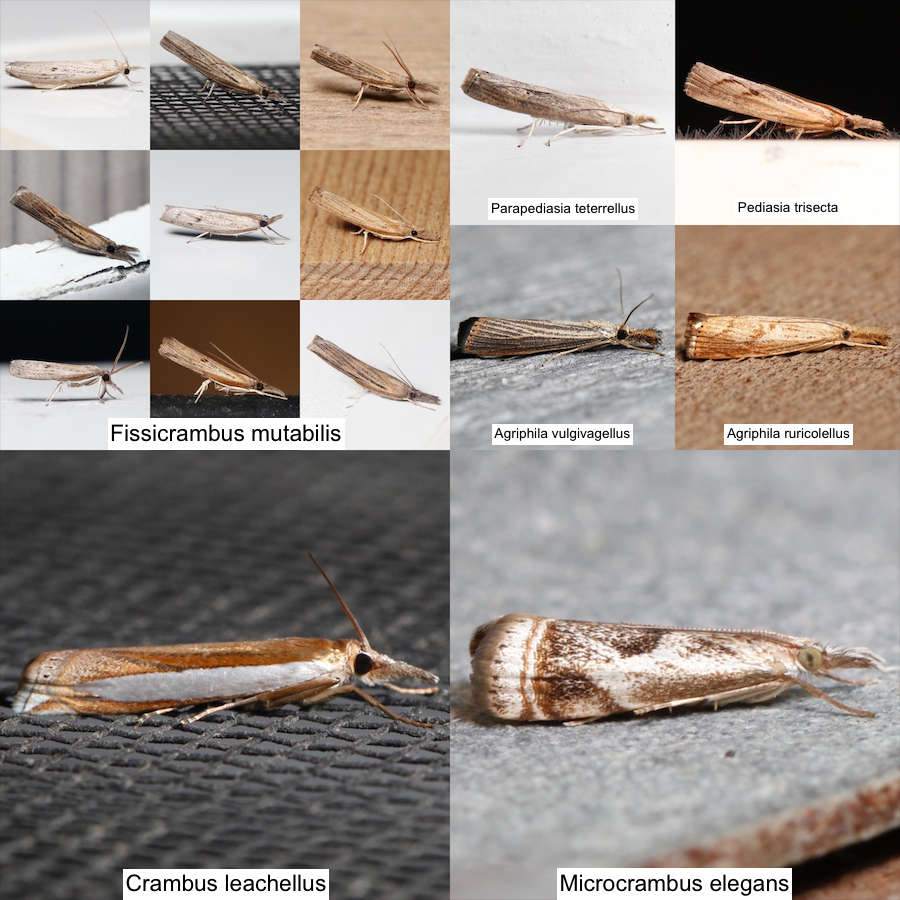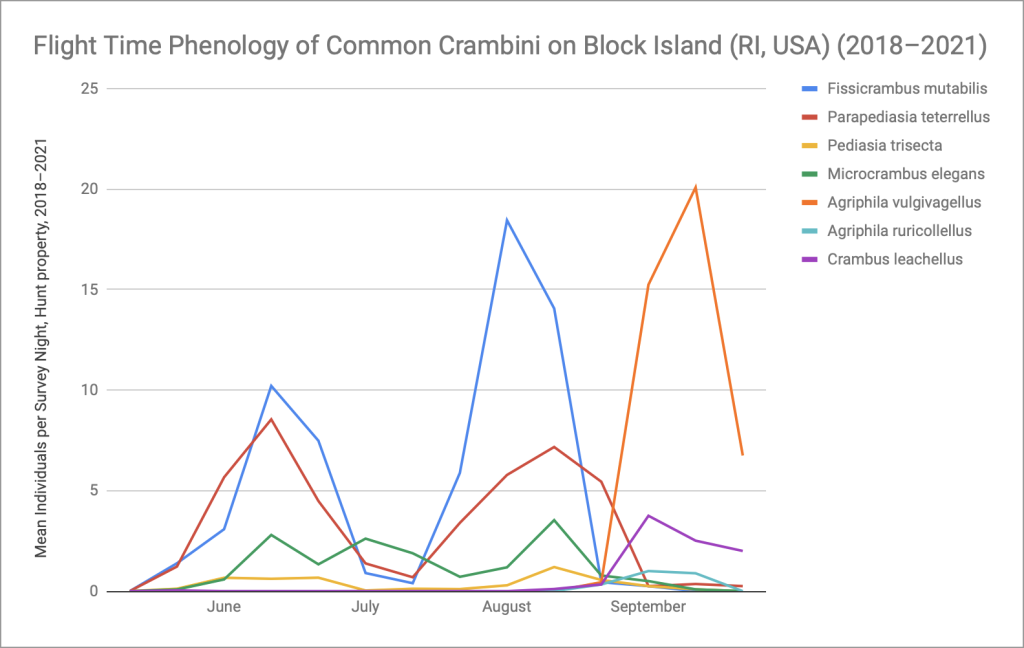Crambidae
121 species in 71 genera are known from Block Island. This family of mostly small to medium sized moths includes leaf tiers, stem borers, and root feeders. Several species known from Block Island feed on aquatic vegetation.
Crambinae
This subfamily includes four of the ten most common moth species at the Hunt property lights, all in the tribe Crambini. These moths feed on roots of grasses as larvae and can be turf pests.

